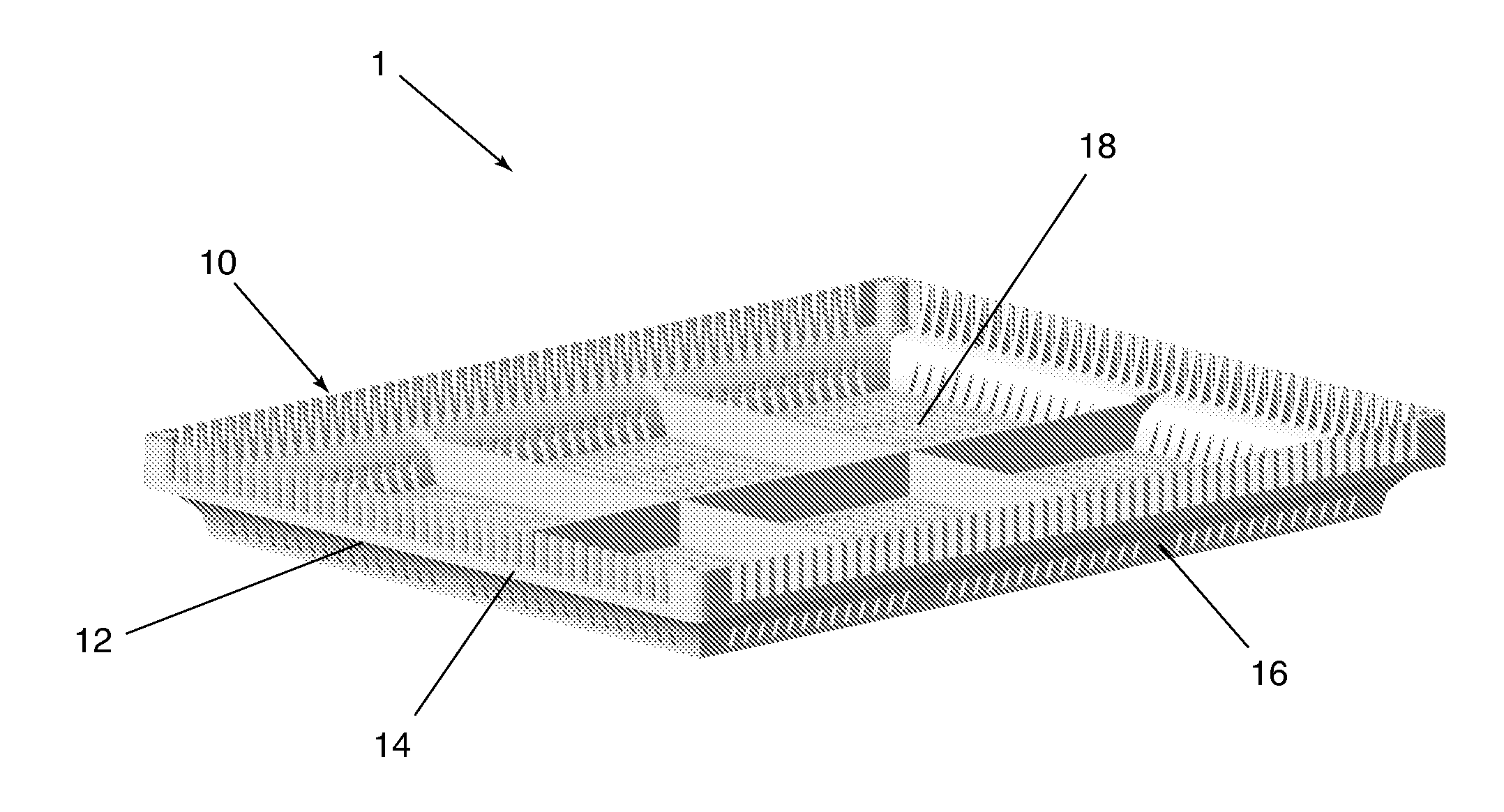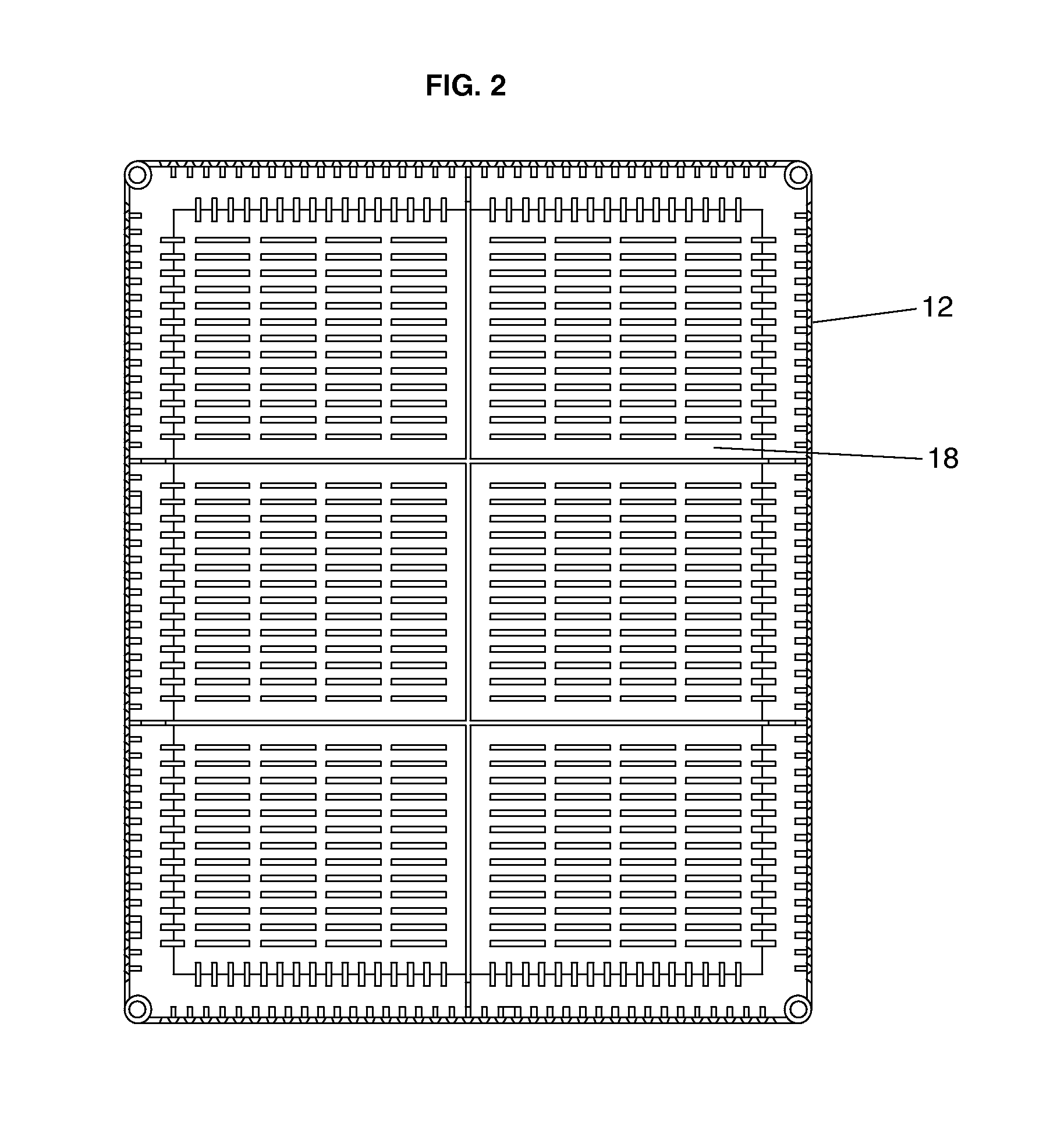Modular Green Roof System
a green roof and module technology, applied in the field of plant husbandry and to receptacles for growing media, can solve the problems of unsightly barren lines, inability to overcome the disadvantages mentioned, and unsatisfactory conditions, and achieve the effect of convenient root spread and moisture equalization, effective method of supply and distribution, and continuous and natural appearan
- Summary
- Abstract
- Description
- Claims
- Application Information
AI Technical Summary
Benefits of technology
Problems solved by technology
Method used
Image
Examples
Embodiment Construction
[0044]Before explaining at least one embodiment of the present invention in detail, it is to be understood that the invention is not limited in its application to the details of construction and to the arrangements of the components set forth in the following description or illustrated in the drawings. The invention is capable of other embodiments and of being practiced and carried out in various ways. Also, it is to be understood that the phraseology and terminology employed herein are for the purpose of description and should not be regarded as limiting.
[0045]FIG. 1 shows a perspective view of the preferred embodiment of the present invention 1. This preferred embodiment consists of an injection-molded, plastic, rectangular tray 10 for use in modular green roof applications. The tray has four sidewall surfaces 12 and a bottom surface 18, all surfaces having a plurality of slots or perforations. Each of the sidewall surfaces consists of an upper portion 14 and a lower portion 16. S...
PUM
 Login to View More
Login to View More Abstract
Description
Claims
Application Information
 Login to View More
Login to View More - R&D
- Intellectual Property
- Life Sciences
- Materials
- Tech Scout
- Unparalleled Data Quality
- Higher Quality Content
- 60% Fewer Hallucinations
Browse by: Latest US Patents, China's latest patents, Technical Efficacy Thesaurus, Application Domain, Technology Topic, Popular Technical Reports.
© 2025 PatSnap. All rights reserved.Legal|Privacy policy|Modern Slavery Act Transparency Statement|Sitemap|About US| Contact US: help@patsnap.com



